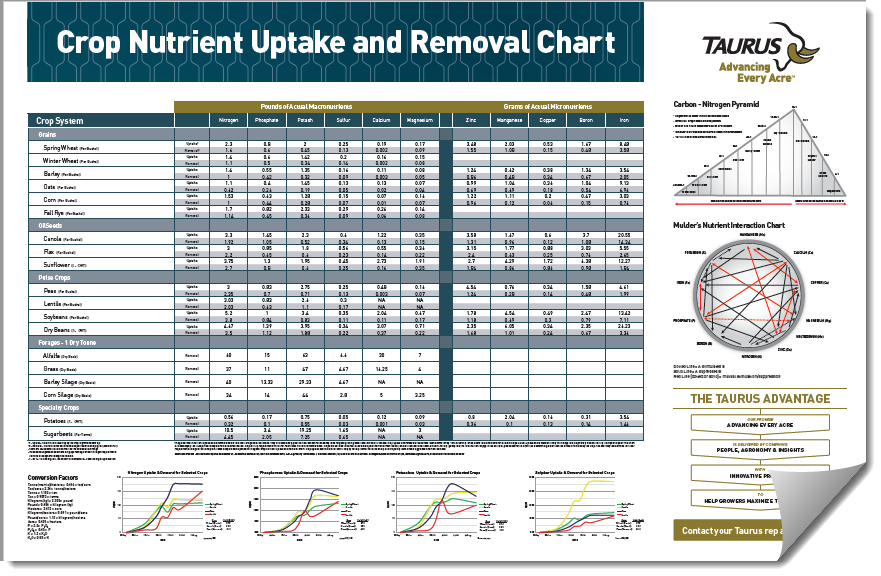
Soil Testing: The Nutrients You Never Knew You Had
How strategic soil testing can help you get the most value from nutrients in your soil
Discovering existing sources of plant-available nutrient is like finding a $20 bill in your jeans… money you never knew you had. It’s not a windfall, but it’s nothing to sneeze at.
Growers are often surprised to learn that they may have higher nutrient and micronutrient levels in their soil than they thought. While yield levels and uptake & removal charts can certainly help, the surest and most accurate way to understand the soil profile is through a soil testing program. This knowledge can help you tailor your fertility program to determine which fields need a top-up – and which need a nutrient refill.
Let’s look at some potential sources of hidden nutrients.
Four reasons soil testing can uncover hidden nutrients:
1. Nutrient levels are not uniform across your fields
Soil sampling is meant to give you a representative picture of your soil makeup. The trick is in knowing where to sample and how many samples are required to give you an accurate representation.
Test both high performing and low performing areas. Nutrients will generally be more depleted in parts of the field where you achieved high yield the previous season. Conversely, in underperforming areas, unused nutrients will often be available to this season’s crop.
Nutrient removal charts (like the one below) can give you a ballpark estimate. But for a more accurate picture it’s important to test – not guess.
Testing those underperforming areas can also identify other issues that may be affecting production – such as a micronutrient deficiency, or concerns around pH, salts or sodium.
2. There may be plant accessible nutrients deep in the soil
When most growers do soil sampling, they collect at depths up to 6”. This makes perfect sense, as 80% to 90% of nutrient uptake occurs at this level, and is the depth where fertilizer is applied. Yet you don’t want to ignore that extra 10% to 20% well of nutrients available in the subsoil. A 6” to 12” or 12” to 24” sample can provide significant information on mobile nutrients like Nitrogen or Sulphur that will be available to the plant.
3. Remember to account for organic matter
You likely have a rich source of nitrogen sitting under your nose. Testing for organic matter and calculating ENR (Estimated Nitrogen Release) can further inform your fertilizer requirements.
Percent organic matter is a measurement of the amount of plant and animal residue in the soil. The color of the soil is usually closely related to its organic matter content, with darker soils being higher in organic matter.
The organic matter is a reservoir containing nitrogen and many other essential nutrients. Bacterial activity releases some of this reserve nitrogen, making it available to the plant.
The calculated ENR is an estimate of the amount of nitrogen that will be released over the season. In addition to organic matter level, ENR may be influenced by seasonal variations in weather conditions as well as physical soil conditions.
4. Don’t let analytics fall victim to cost cutting efforts
Resist the temptation to cut back on soil sampling as a cost cutting measure. After all, it is one investment that is all about helping you spend your money wisely.
It is recommended that you conduct a soil sample each year. The key is to be consistent with your soil testing schedule. If you’ve been doing it in May, stick with May. If you’ve been doing it in the fall, stick to fall. And if possible, GPS-reference your soil tests to allow for consistency on testing areas from year to year. This will allow you to track nutrient levels in your field and compare those levels to production. Be sure to choose a professional testing lab and always ensure you’re collecting your samples properly. (there are useful Soil Sampling Guides available to help)
RECOMMENDED READING:
For additional information, we recommend reading “4 Reasons to Make Soil Sampling a Top Priority this Crop Season” by Elston Solberg Senior Agri-Trend Agri-Coach and Jill DeMulder, Knowledge Team. As published in the AgAdvance Journal Spring 2017.

